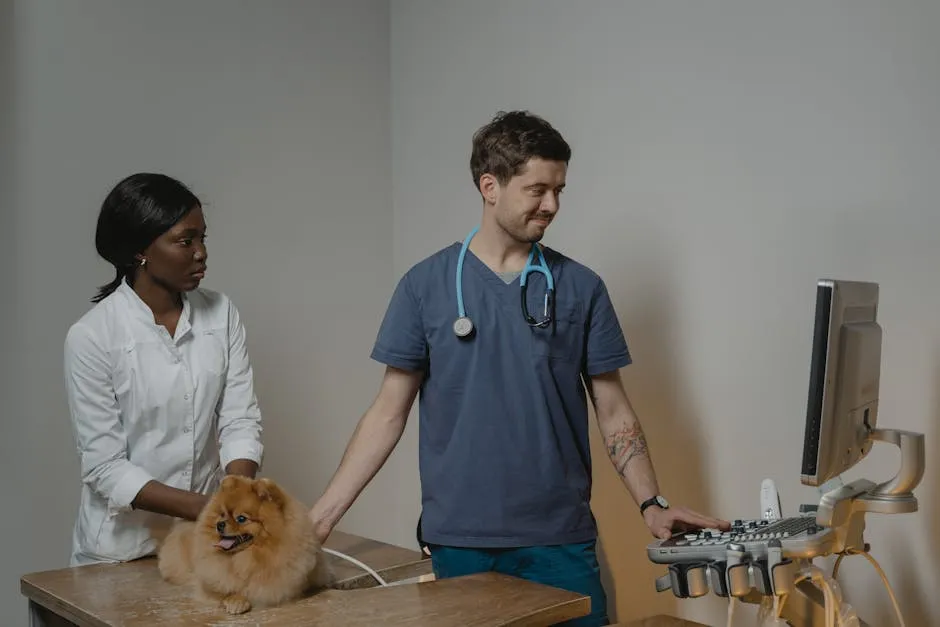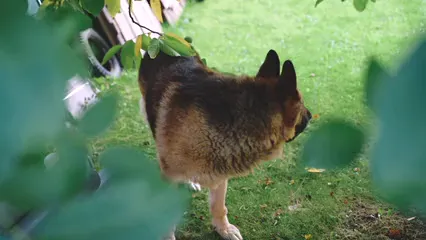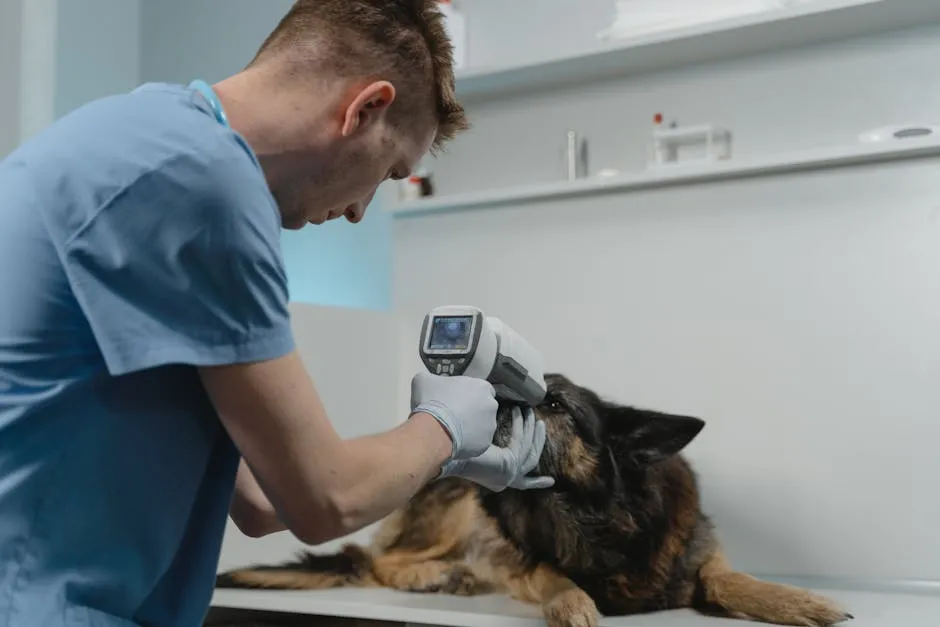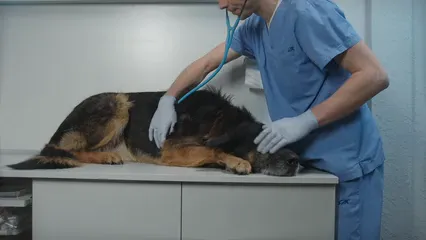
Why Is My Dog Pooping Blood? Understanding the Causes and What to Do
Introduction
The sight of blood in your dog’s stool can send any pet parent into a tailspin. It’s a shocking moment, triggering emotions ranging from fear to outright panic. After all, our canine companions depend on us for their well-being, and we want nothing but the best for them. But before you throw on your superhero cape and rush to the vet, take a deep breath. Understanding the potential causes of this alarming symptom is crucial.
First off, let’s clarify one thing: blood in your dog’s poop isn’t a diagnosis; it’s a symptom. It can indicate a range of issues, from minor to severe. So, what should you do? This guide aims to unravel the mystery behind why your dog might be pooping blood. We’ll cover the various causes, the steps you should take, and how to keep those tails wagging without a hitch.
One possible culprit is dietary indiscretion. Dogs, with their curious noses and adventurous palates, often eat things they shouldn’t. That can lead to gastrointestinal upsets, resulting in blood-streaked stools. Infections and parasites are also common offenders. Just like kids, dogs can pick up germs and bugs that cause all sorts of tummy troubles.
Speaking of dietary issues, consider investing in a Hypoallergenic Dog Food. It’s designed for dogs with sensitive stomachs, ensuring they get the nutrition they need without the extra ingredients that can upset their systems.
More serious conditions cannot be ignored either. From bleeding disorders to organ dysfunction, the reasons behind bloody poop can range from benign to life-threatening. It’s important to stay calm, observe your dog closely, and take notes on their behavior, other symptoms, and the appearance of the blood itself.
But don’t worry! By the end of this guide, you’ll have a better understanding of what to look for and when to seek help. Remember, your dog’s health is a priority, and being informed is your best weapon. So, grab a cup of coffee, sit back, and let’s get to the bottom of this, shall we?

Summary
Experiencing blood in your dog’s stool is not just a cause for concern; it requires immediate attention. This article will explore various potential causes, including dietary indiscretion, infections, and systemic health issues. We’ll guide you through the steps to take if you notice blood in your dog’s poop, including what to monitor and when to consult your veterinarian.
Understanding the signs, symptoms, and possible treatments empowers you to advocate effectively for your furry friend’s health.
Key Points:
– Blood in dog poop may indicate gastrointestinal issues, infections, or other underlying health problems.
– The type of blood—bright red versus black—suggests different sources of bleeding.
– Immediate veterinary consultation is critical, especially if blood is accompanied by other symptoms.
– Treatment varies based on diagnosis and may include dietary adjustments, medications, or even surgery in severe cases.
By familiarizing yourself with the potential causes and knowing when to act, you’re already a step ahead in ensuring your dog’s health and happiness. Now, let’s dive deeper into the specifics of dog poop blood and what it all means!

Understanding Blood in Dog Poop
Seeing blood in your dog’s poop can feel like a scene from a horror movie. It’s alarming, and the implications can range from minor to serious. Let’s break it down, shall we?
What Does Blood in Dog Poop Indicate?
When blood appears in your dog’s stool, it’s essential to consider what this symptom might mean. First off, it’s a signal that something is amiss in your pup’s gastrointestinal tract. Blood can indicate issues like infections, parasites, or even more severe problems such as cancer.
Now, let’s get technical for a moment. Blood in dog poop can be classified into two categories: hematochezia and melena. Hematochezia refers to bright red blood, indicating bleeding from the lower gastrointestinal tract. Think of it as the fiery red flag waving from your dog’s colon. On the other hand, melena presents itself as black, tarry stools that suggest bleeding from the upper GI tract. This distinction is crucial because it helps your veterinarian narrow down the potential causes during diagnosis.

Types of Blood in Dog Poop
Hematochezia: This bright red blood typically signals lower GI bleeding. It’s often associated with conditions like colitis, which is a fancy way of saying inflammation of the colon. Other culprits could include trauma from rough play or even foreign objects your dog has decided to munch on (we all know how curious they can be).
While we’re on the topic of keeping your dog healthy, a Pet First Aid Kit is a must-have for every dog owner. It ensures you’re prepared for minor injuries or emergencies, allowing you to provide immediate care until you can get to the vet.
Melena: The black, tar-like appearance of melena indicates bleeding higher up in the digestive system, like from the stomach or small intestine. This could be due to ulcers, tumors, or liver disease. If you notice this type of blood, it’s time to call your vet faster than your dog can bolt for a tasty snack!
Understanding these terms and their implications can prepare you for what to expect during a vet visit. The type of blood you see can provide valuable clues to your vet, helping them diagnose and decide on the best treatment for your furry friend.
In short, blood in your dog’s poop is serious business. If you spot it, don’t panic, but do act. Whether it’s from a minor issue or something more severe, getting to the root of the problem is essential for your dog’s health and happiness. So, grab that phone and get ready to give your vet a call!

Symptoms to Watch For
Key Symptoms Indicating Serious Issues
Spotting blood in your dog’s poop can be alarming. But it’s not just the blood that matters; accompanying symptoms can tell you how serious the situation is. Key indicators that something’s off include:
– Lethargy: If your dog is more tired than usual, it’s a red flag. Dogs are usually full of energy. If they seem like they just ran a marathon after a short walk, something’s up.
– Pale Gums: Healthy gums should be a nice pink. If they look pale or white, your dog might be losing blood or dealing with anemia. Time to panic? Not yet, but don’t wait too long to consult a vet.
– Vomiting: If your furry friend is hurling up their last meal, it’s a sign of distress. Pair that with blood in their stool, and it’s a call to action.
– Tenesmus: This fancy word means your dog is straining to poop but not producing much. If it looks like they’re giving birth to a marble, something’s not right.
– Refusal to Eat: If food suddenly loses its allure, that’s a sign your pup might be feeling unwell. Dogs love food more than their favorite toys; if they’re turning their nose up at it, get them checked.
If you notice any of these symptoms alongside the blood, it’s crucial to see a vet immediately. Early evaluation can be a lifesaver.

Monitoring Your Dog’s Condition
Keeping an eye on your dog’s behavior can help you catch problems early. Pay attention to changes in:
– Behavior: Is your dog more withdrawn or irritable? Changes in personality can hint at underlying issues.
– Appetite: Note any decline in their enthusiasm for food. If their bowl is untouched, it’s time to investigate.
– Stool Consistency: Take a look at your dog’s poop. Is it normal, loose, or bloody? Tracking these changes helps your vet understand the situation better.
Keeping a log of these symptoms can be beneficial. Documenting changes in behavior, appetite, and stool can provide your veterinarian with valuable insights. After all, you know your dog best, and your observations can guide the vet in making an informed diagnosis.

Diagnosing Blood in a Dog’s Stool
When you spot blood in your dog’s stool, it’s time to consult a veterinarian. They’ll conduct a thorough examination to determine the cause. A few key procedures will likely be part of this diagnostic journey.
Veterinary Procedures
First, the vet will perform a physical exam. They’ll check for any obvious signs of distress or discomfort. This includes a rectal examination to look for tumors or foreign objects causing the bleeding. Next on the agenda is a stool analysis. This test identifies any parasites or abnormal bacteria lurking in your pup’s gut. Blood tests may also be conducted to assess overall health and check for infections.
Imaging techniques are also in the toolkit. X-rays can reveal blockages or structural abnormalities in the digestive tract. Meanwhile, an ultrasound provides a clearer look at internal organs, helping identify potential issues. In some cases, an endoscopy might be necessary. This procedure allows the vet to view the gastrointestinal tract directly and even take biopsies if needed. It’s like giving your dog a VIP tour of their own insides!
So, if your dog is pooping blood, don’t wait. The sooner you get them to the vet, the quicker you can hit the path to recovery.

Treating Bloody Poop in Dogs
Once the diagnostic tests are complete, your vet will tailor a treatment plan based on the findings. Treatment can vary widely, depending on the underlying cause of the bloody stool.
Treatment Options Based on Diagnosis
One common approach is dietary changes. If your dog’s digestive system is upset, bland or hypoallergenic diets can work wonders. Think of it as a spa day for their tummy! Foods like boiled chicken and rice can soothe irritation and help the gut heal. For those looking to make mealtime even more exciting, consider a Dog Food Storage Container. It keeps their food fresh and tasty, ensuring your pup enjoys every bite!
Medications often come into play as well. If your dog has a bacterial infection, antibiotics will be prescribed. In cases of parasitic infections, anti-parasitic medications are a must. For inflammation or pain, anti-inflammatories may be recommended. It’s like putting out the fire in their belly!
Sometimes, surgery is the best option. If your pup has tumors, obstructions, or other serious issues, surgical intervention may be necessary. It’s an unfortunate situation, but sometimes it’s the only way to ensure your dog’s health.
Monitoring your dog’s recovery is crucial. Pay attention to any signs of improvement. Is your dog eating again? Are they more energetic? These are good indicators. However, if symptoms persist or worsen, follow up with your vet. They’re your best ally in this journey.
Long-term management strategies may also be needed. If your dog has a chronic condition, consider regular vet visits to keep tabs on their health. Adjusting their diet to include high-quality ingredients can also help. It’s all about maintaining a happy, healthy gut!
So, while the sight of blood in your dog’s stool can be nerve-wracking, know that with the right care, many dogs bounce back to their cheerful selves. Your vigilance and prompt action play a vital role in their recovery, ensuring they continue to bring joy into your life!

Conclusion
In conclusion, spotting blood in your dog’s stool can be a heart-stopping moment for any pet owner. It’s essential to remember that this alarming symptom doesn’t always spell disaster, but it certainly warrants attention. Understanding the potential causes behind this issue can empower you to take the right steps for your furry friend’s health.
Common reasons for blood in a dog’s stool range from minor digestive upset to serious infections and systemic health issues. Dietary indiscretion is a frequent culprit. After all, dogs are notorious for snacking on things they shouldn’t. But don’t dismiss it; even seemingly harmless items can lead to gastrointestinal turmoil.
Infections and parasites are also common offenders. Dogs can easily contract these pesky nuisances, leading to bloody stools. Remember, this is where your vigilance comes in. Keep an eye on your pup’s behavior and health, as early detection is crucial.
More severe causes could include bleeding disorders, organ disease, or tumors. If your dog is also exhibiting other concerning symptoms—like vomiting, lethargy, or refusing food—it’s time to act. Don’t hesitate to reach out to your veterinarian for guidance. The sooner you consult a professional, the better the chances of a positive outcome.
Monitoring your dog’s overall behavior is key. Look for changes in appetite, energy levels, and bathroom habits. Keeping a log of these observations can be invaluable during a vet visit. It helps your veterinarian understand the situation more comprehensively.
Most importantly, always trust your instincts as a pet parent. If something feels off, don’t brush it aside. Your dog’s health is paramount, and timely intervention can make all the difference. With the right care and attention, many conditions can be effectively treated, allowing your furry companion to return to their happy, playful self in no time.
Your dog relies on you, and being proactive can lead to a healthier, happier life for both of you. So, take a deep breath, stay informed, and be ready to take action when it counts!

FAQs
Is blood in my dog’s stool an emergency?
Yes, it often requires immediate attention.
What does it mean if there’s blood but my dog seems fine?
Various reasons exist; still consult a vet, as it may indicate a minor issue or something more severe.
Why is my dog pooping blood and mucus?
This could signal a problem with the colon, often linked to infections or parasites.
What should I do first if I see blood?
Assess your dog’s overall condition and contact your vet for advice.
Can my dog die from pooping blood?
Yes, significant blood loss can be life-threatening; immediate veterinary care is crucial.
As you navigate your dog’s health, consider giving them a little extra love with a luxurious orthopedic dog bed. After all, a well-rested pup is a happy pup!
Please let us know what you think about our content by leaving a comment down below!
Thank you for reading till here 🙂
All images from Pexels




